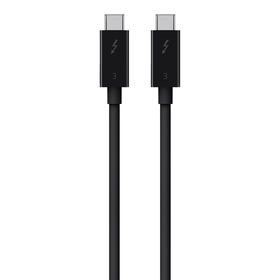 Designed in California | Belkin story of design and quality.
Designed in California | Belkin story of design and quality. USB-C Cables
USB-C, also known as Type-C, is the latest connector developed by the USB Implementers Forum (USB-IF), a group of industry leaders within the consumer electronics community, such as Apple, Intel, Dell, and Belkin. As many of the world's most recognized manufacturers are supporting this technology, it has been widely adopted. USB-C will gradually replace previous USB types, including USB-A, USB-B and USB Mini-B. Plus, as future devices are equipped with the new USB-C port, which is smaller than its predecessors, it's likely these devices will also be thinner and lighter than ever before.
No. USB-C cables can offer power, and some with data transfer speeds of 5Gbps, 10Gbps, 20Gbps, and 40Gbps. USB-C can be certified through various standards of USB-IF or Thunderbolt at the highest industry standards. It can also come in different lengths providing passive and active solutions to help enhance your data transfers.
The USB-C cable head is smaller than before, and looks a bit like a Micro-USB connector. Eventually this is the USB connector you'll use with your devices instead of using your existing USB-A, Micro-B, USB-Mini, or Lightning cable.
No, some USB-C cables are tailored specifically for device charging and may not support video. To make sure a USB-C cable can support video, look for video enabled or DP-Alt Mode or DisplayPort Anternate Mode on USB-C.
Some basic USB-C cables are tailored for low-power devices such as Bluetooth speakers and portable lights. These cables may charge fast charging (high-power) products such as mobile phones and laptops but at a basic charge level. Look for Power Delivery (USB-PD) cables to take full advantage of fast charging (high power) capabilities and make sure the power source is also capable.
No, some USB-C cables are tailored specifically for device charging and may not be intended for data transfer.
No, Some basic USB-C cables are tailored for low-power devices such as Bluetooth speakers and portable lights. These cables may charge fast charging (high-power) products such as mobile phones and laptops but at a basic charge level. Look for Power Delivery (USB-PD) cables to take full advantage of fast charging (high power) capabilities and make sure the power source is also capable.
Yes. There is a wide range of USB-C cables from the basic black color to premium finishes and textures.
No, Some basic USB-C cables are tailored for low-power devices such as Bluetooth speakers and portable lights. These cables may charge fast charging (high-power) products such as mobile phones and laptops but at a basic charge level. Look for Power Delivery (USB-PD) cables to take full advantage of fast charging (high power) capabilities and make sure the power source is also capable.
















